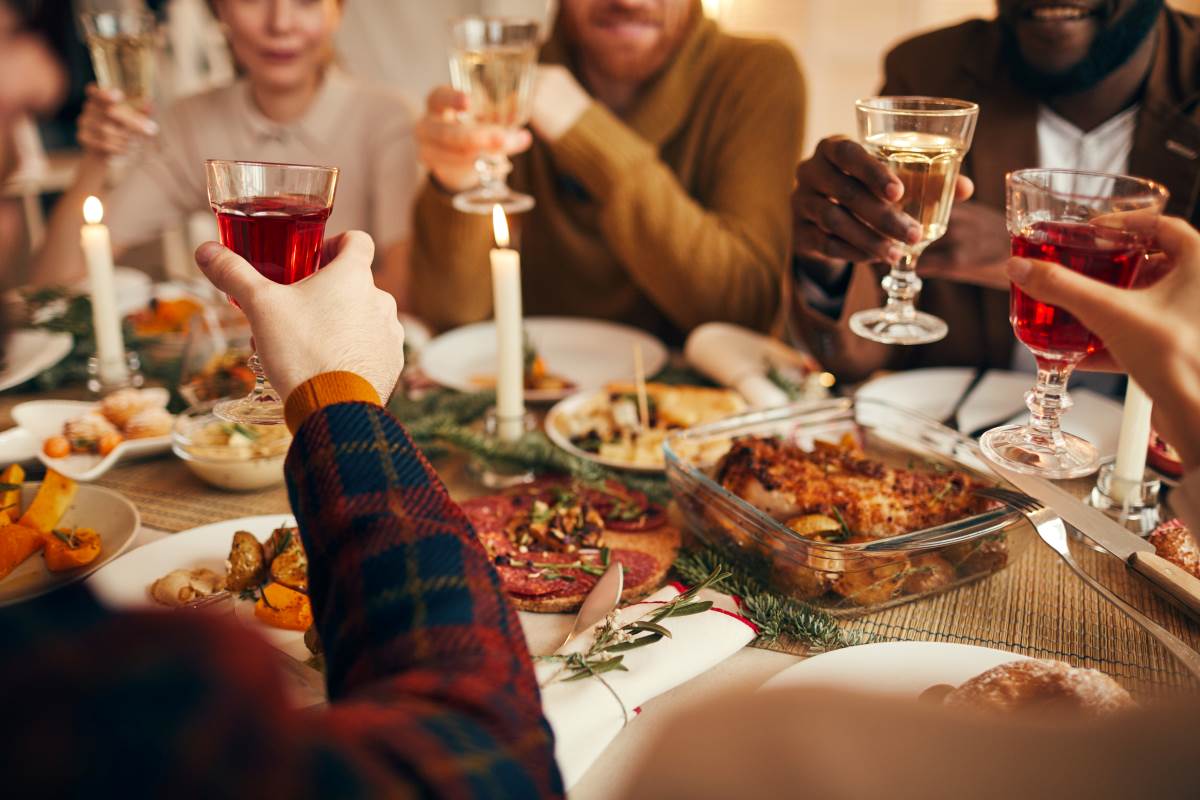Host a Safe Holiday Gathering

The holidays are coming, and fun is to be had. This time of year we gather with friends, family, and coworkers to celebrate and enjoy each other’s company. Alcohol is often a part of these festivities and celebrations. During the holiday season, U.S. alcohol sales spike, and people who rarely consume alcohol may occasionally find themselves partaking. What steps can we take to make sure that everyone - including those who choose not to consume - have a great time?
During your gatherings, be sure to include non-alcoholic options for your guests. Some people may choose not to consume alcohol and others may decide to switch to a non-alcoholic beverage after a few drinks. A quick search of the internet will provide a wide variety of fun holiday-themed drinks like party punches and seltzers. They are usually easy to make and include few ingredients. Those that choose to consume may also consider alternating to a non-alcoholic beverage between drinks.
Be sure to include food for your guests. Heavier hor d'oeuvres that include high protein and carbohydrates are often a good choice as they take longer to digest and will slow down the absorption of alcohol. Good options include things like meats, cheeses, and vegetable trays.
Ensure your guests have a safe way to get home. Each holiday season we see numbers for impaired driving increase. An arrest or impaired driving crash are a quick way to put a damper on the holidays. The easiest way to help your guests is having a plan in place prior to the gathering. You may consider enlisting the help of guests who choose not to consume or having contact information for local taxis or ride share services.
If you personally choose to consume alcohol, there is an excellent guideline that can be used to reduce risk. According to the Prevention Research Institute, which is the creator of the Prime for Life Program, their evidence-based guideline is called the “0-1-2-3” method. This method is grounded in extensive research and has been found very effective. In addition, throughout the Marine Corps, the guideline has been utilized and adopted as a standard for what low-risk alcohol and substance use entails.
The “0” refers to illicit drug use, misuse of prescription and over-the-counter medications, underage alcohol consumption, or alcohol consumption for those with a current substance use disorder. Once a person has been diagnosed with a substance use disorder, the lowest-risk option for them is abstinence. This is often referred to as “recovery,” and many people in recovery can and do flourish during the holiday season. The “0” is also recommended for individuals who have health problems or are taking medications that may be adversely affected by alcohol consumption.
The “1” refers to having one standard drink per hour. A standard drink is measured as 5 ounces of wine, 1 ½ ounces of 80 proof liquor, or 12 ounces of 5% ABV beer. Research suggests that having more than one drink per hour increases the risk of experiencing impairment related problems. Impairment related problems include accidents, injuries, poor decision making, and conflict with others.
The “2” refers to the maximum number of drinks daily that would be low-risk. Research suggests that many people can have one to two standard drinks each day without increasing risk for problems. Research shows that having more than two standard drinks per day increases the risk for health problems, poor quality of life, and a decreased life span. However, people that have certain risk factors, such as a family history of alcoholism or addiction, may consider not consuming alcohol daily even in small amounts.
The “3” refers to the maximum number of drinks a person can have in any one day if they are not a daily drinker Research shows that having more than three standard drinks on one occasion increases risk for both impairment and health-related problems.
These guidelines are a great way to reduce your risk of problems for the holidays, and for a lifetime Please note that these guidelines are “low-risk” and not “no risk.” There is a small possibility that someone consuming within these guidelines could experience an alcohol or substance related problem. For those that want to be “no risk,” their best option is abstinence. Additionally, the guidelines are also based on following applicable laws, such as not drinking underage or driving impaired.
We hope these tips will help you have a fun, safe holiday season. If you or someone you know needs support for alcohol or substance use this season, contact the Alcohol Prevention Specialist at (252) 466-8413 for helpful resources.